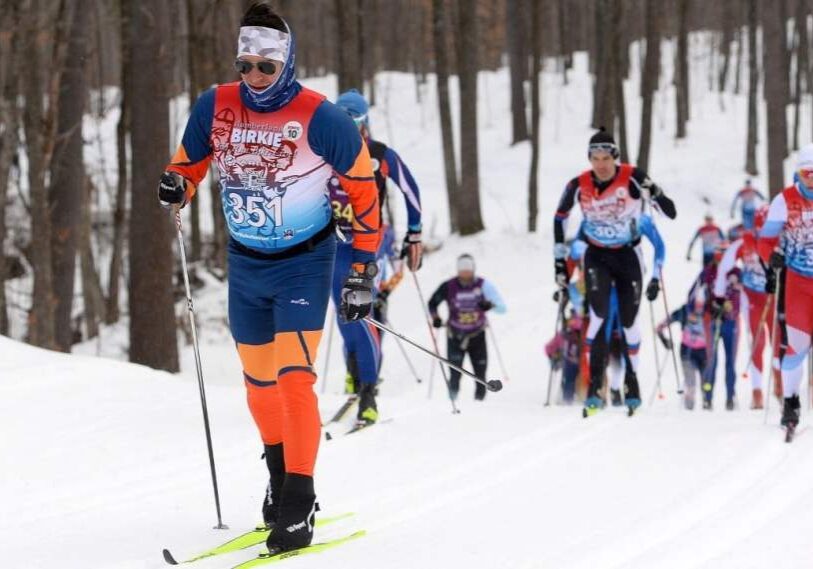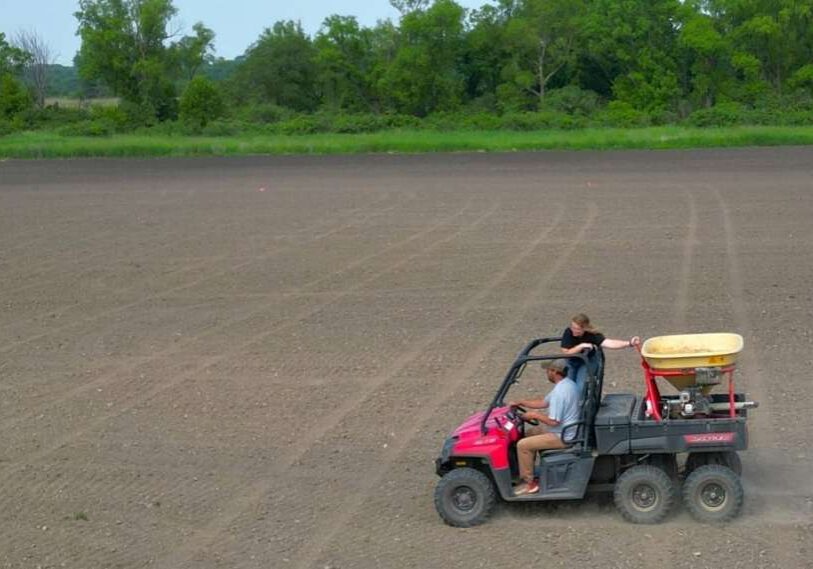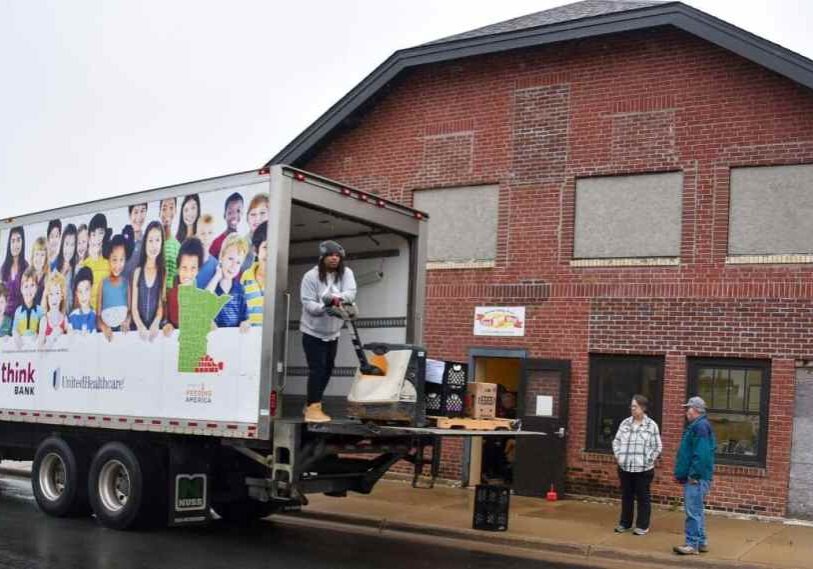Prescribed Burn Team Treats State Highway Ditches With a Dose of Fire
State tax dollars at work maintaining safety and 'prairie' aesthetics along Minnesota roadsides

DRESBACH – Fire crackles and shoots up the stocks of dried grass at the Interstate 90 Dresbach exit as a Minnesota Department of Transportation (MnDOT) worker’s drip torch spills droplets of fire while he strides ahead.
You may see the small group of workers carrying drip torches, shovels, rakes and driving all-terrain vehicles with a fire hoses and water as the flames and smoke swirl upward. They’ve already checked the weather but do so again at the time of the burn with their Department of Natural Resources-issued burn permit in hand.
Each fall and spring motorists in southeast Minnesota’s Driftless Region will see stretches of burned areas along the state’s highway system as MnDOT’s prescribed burn team tends to the vegetation with a dose of fire. In 2023, the MnDOT team in southeast Minnesota burned 15 sites accounting for approximately 33 miles, including highway sites in Houston, Fillmore, Mower, Winona and Olmsted counties.

MnDOT burn team members Nate Johnson, foreground, and Curt Henderson, with a drip torch, tend to a prescribed burn in October along an Interstate 90 exit to Highway 61 to La Crescent. (Photo provided by MnDOT)
Growth out of fire
Fire is an important aspect of vegetation management because many types of plants need fire for ideal growth. It’s used in combination with mowing, herbicide application, biological control and planting in MnDOT’s Integrated Roadside Vegetation Management program.
“It takes a lot of planning, coordination and then good weather conditions to ensure we have a good, safe burn,” said Nate Johnson, MnDOT’s prescribed burn program coordinator.

(L to R): Tony Murilla and Nate Johnson of MnDOT pause during prescribed burning at the Interstate 90 Dresbach rest area in October. (Photo provided by MnDOT)
A prescribed burn team at MnDOT sometimes puzzles people, who tend to think of the agency as road construction and snowplowing.
“Healthy roadside vegetation is necessary for preventing weed infestations, controlling erosion, protecting water quality and keeping roadways safe, and fire plays a key role,” Johnson said.
Much goes into maintaining the transportation system and one element is tending to the ditches or rights-of-way along the highways with prescribed or planned burning:
Better weed control – Simply spraying weeds does little to prevent repeat infestations. After weeds are controlled, there needs to be desirable vegetation that can fill in to prevent future weed problems. Fire promotes dense stands of native plants (think ‘prairie’) that can outcompete weeds and make it harder for them to get established.
Better water quality – Fire encourages dense native vegetation with deep root systems that prevent erosion and filter storm water runoff.
Better safety – Prescribed fire is used to control brush and small trees near the roadway, which would otherwise become safety hazards. Fire promotes tall native grasses and forbs that trap blowing snow and prevent it from drifting across the road.

Four MnDOT prescribed-burn team members take a break during a prescribed burn along Interstate 90 in Winona County in October. (Photo provided by MnDOT)
The MnDOT team draws from other groups in agency, primarily the maintenance teams, and many of those individuals are members of their towns’ volunteer fire departments. A small number of the team also have strong training and experience backgrounds that qualifies them to be deployed to aid in other wildfire fighting situations. In the past three months, members from the southeast Minnesota team have ventured to Manitoba, Canada and out to western Montana as part of interagency efforts.
Tony Murilla, a MnDOT maintenance worker at Dresbach and captain in the La Crescent Fire Department, helps lead the prescribed burning in southeast Minnesota. He was in Montana earlier this year on a firefighting unit.

(L to R): Steve Reinhardt, Curt Henderson and Jon Beeman of MnDOT walk to the next area of prescribed burning at the Interstate 90 Dresbach rest area in October. (Photo provided by MnDOT)
“The additional experiences of wildland firefighting that we bring back to our work at MnDOT are invaluable,” Murilla said. “When we do a burn near the highway, we need to have a good plan, experienced people and be on point for safety. In the end, this really improves the vegetation we want to grow, flourish and help in the maintenance of our ditches in all seasons.”
Good to know
If you’re driving by a prescribed fire in progress, treat the area as a work zone. There will be workers on the roadside, so concentrate on driving and follow any temporary traffic instructions. There is no need to report fires that are attended by a burn crew or when “Controlled Burn Ahead” signs are placed beside the road.
This is another in our recurring series of prairie restoration-related stories reported by Root River Current. Other stories include Prairie Strips | Big Benefits, Small Investment, Bold Vision, Deep Roots: Two Southeast Minnesota Nurseries Source Seed For Restoring Native Landscapes and Rattlesnake Responders Work to Bring Timber Rattlesnakes Back from the Brink.






